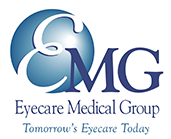
Did you know that November is Diabetic Eye Disease Awareness Month? Diabetic eye disease is one of the leading causes of blindness in the United States.
It’s also manageable as long as it’s diagnosed early before any permanent damage occurs. This is why awareness of diabetic eye disease is so important. Keep reading to learn more!
Types of Diabetic Eye Disease
The most common eye disease directly related to diabetes is diabetic retinopathy. Diabetic retinopathy happens when high blood sugar levels cause the blood vessels in the retina to swell and leak. This damages the surface of the retina.
The retina is a vital component in your eye that converts light into impulses sent to the optic nerve through photoreceptor cells. When retinopathy damages these cells, it causes visual loss in the area of the retina that’s been damaged.
There are other eye diseases that also affect diabetics at higher rates than other individuals. These include glaucoma and certain kinds of cataracts. If you have diabetes, it’s essential to have regular screenings for all eye conditions.
Who’s at High Risk?
People with diabetes are at higher risk for diabetic eye disease. But there are other factors that make diabetic eye disease far more likely.
The biggest factor is having unmanaged glucose levels. Most issues arise when a diabetic patient has high blood sugar levels.
Keeping your blood sugar within recommended limits is the best way to lower your risk.
Other risk factors include:
- High blood pressure and/or cholesterol
- Smoking
- Pregnancy
- Being African American, Native American, or Latinx
- Having diabetes for a long time
Lowering Your Risk for Diabetic Eye Disease
The best way to lower your risk for diabetic eye disease is to live a healthy lifestyle. This means keeping your blood sugar under control, as well as your blood pressure and cholesterol, and avoiding tobacco products.
But some of the risk factors listed above cannot be controlled. That’s okay! Being aware of your risk is the first step to keeping your vision.
If you’re high risk, it’s important to have regular eye exams so any eye diseases can be spotted as early as possible.
Treatment for Diabetic Eye Disease
To be treated for any eye disease, you need to have a diagnosis. If you’re a diabetic, this means you need to have regular eye exams.
If you’re a diabetic who’s a particularly high risk, you may want to have eye exams even more often, as recommended by your doctor.
Unfortunately, once the retina is damaged, the vision loss is irreversible. But when caught early enough, the damage is minimal. Swelling and leaking blood vessels are treatable to prevent further damage.
Treatment options, ranging from laser surgery that cauterizes leaking vessels to medication injections that reduce abnormal vessel growth, are ways to manage diabetic retinopathy. Diabetic retinopathy has no cure. But blindness from retinopathy is something you can prevent through proper management.
Have questions about diabetic retinopathy or your eye health? Schedule an appointment at Eyecare Medical Group in Portland, ME today!





